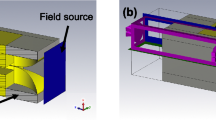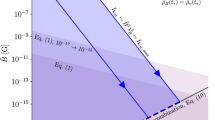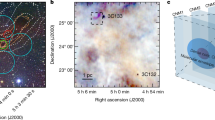Abstract
ACCORDING to Voigt, the displacement of the outer components of the Zeeman triplet plotted against the strength of the magnetic field is represented by a hyperbola, when the light is observed at right angles to the field. The hyperbola approaches asymptotically to a straight line in strong fields, where most of the observations have hitherto been made by different experimenters. Moreover, the intensity of the component towards the red is greater than that towards the violet in weak fields, and gradually tends to equality as the field is increased. Gehrcke and von Baeyer examined the separation of the satellites of the mercury line 546.1 μμ in a field of 535 Gauss, but did not notice the asymmetry as indicated by theory.
This is a preview of subscription content, access via your institution
Access options
Subscribe to this journal
Receive 51 print issues and online access
$199.00 per year
only $3.90 per issue
Buy this article
- Purchase on SpringerLink
- Instant access to full article PDF
Prices may be subject to local taxes which are calculated during checkout
Similar content being viewed by others
Author information
Authors and Affiliations
Rights and permissions
About this article
Cite this article
NAGAOKA, H. Zeeman Effect in Weak Magnetic Fields. Nature 79, 221 (1908). https://doi.org/10.1038/079221a0
Issue date:
DOI: https://doi.org/10.1038/079221a0



